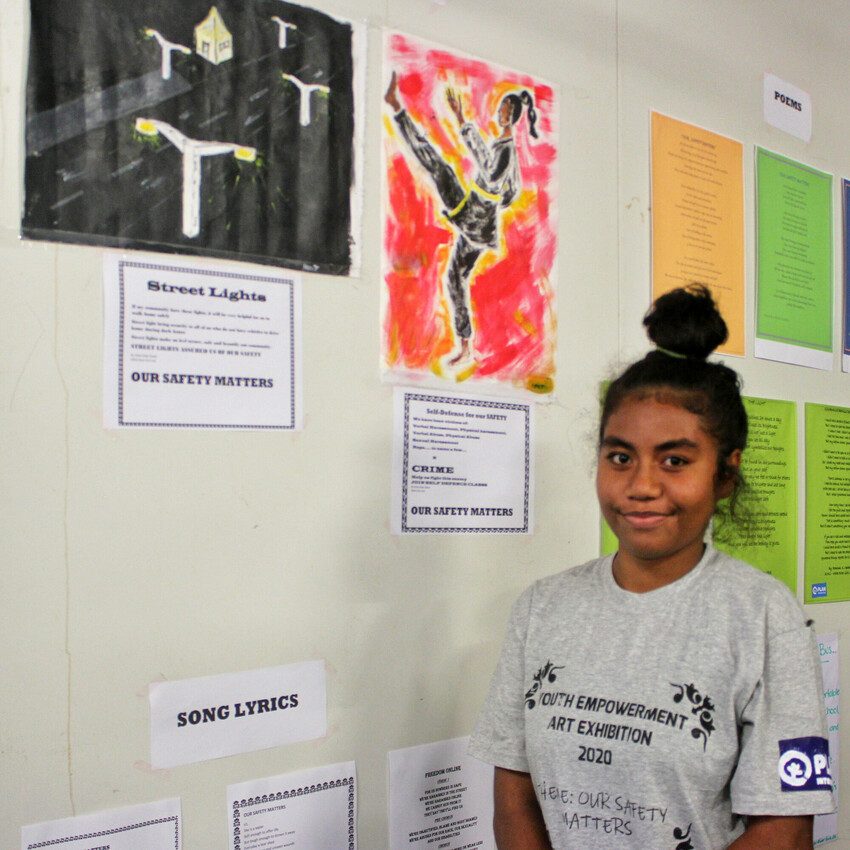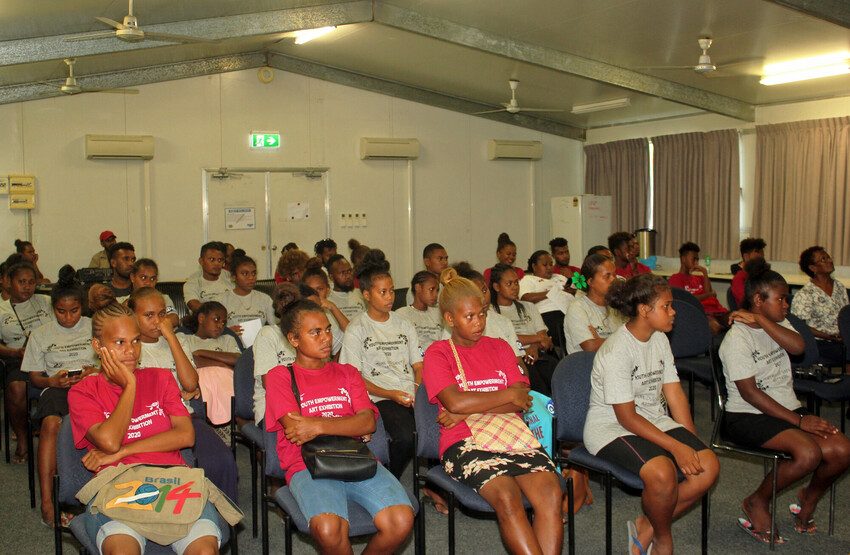Using Art to get their Voices Heard
18 January 2022<mark style="background-color:rgba(0, 0, 0, 0)" class="has-inline-color has-black-color">Anisa and Trish, along with 51 other young people in December 2020, used their art exhibition, 'Our Safety Matters' to amplify their voices and express their concerns about girls' safety in public spaces in Honiara, Solomon Islands.</mark>
Plan International’s 2021 Asia-Pacific Girls Report: Voice, Choice, and Power details the incredible activism carried out by girls and young women throughout the region. From social media campaigns, child marriage prevention to educating young people about gender violence, these outspoken wonders of the world are proving to be key in the fight for gender equality.
However, not all female activists are the same. Not everyone is able to confidently use their voices and social media platforms to fight for their rights, harness support from allies in their community, or gather together a group of informed people to advocate for change.
This may be because of traditional norms and patriarchal structures within certain societies that restrict women’s voices and power, or because girls’ activism could bring threats of violence and harassment to some, or it may be that some girls prefer to express themselves in different ways.

The latter was true for Anisa and Trish who, along with 51 other young people in December 2020, used their art to amplify their voices and express their concerns about girls’ safety in public spaces in Honiara, Solomon Islands.
Their art exhibition, ‘Our Safety Matters’, provided the opportunity for many influential representatives in Honiara to learn about the pressing issues that many young people have regarding the safety of girls and women in their city.
Through song, video, poems, paintings, visual art, and short stories, girls and boys were able to express themselves and raise their concerns in creative and impactful ways. Issues expressed included: violence against women, sexually abusive language and harassment, drunk and disorderly behaviour by men in public spaces and on public transport, unsafe roadside markets, and poor street lighting.
For Anisa, this proved the perfect opportunity for her to express her own fears and worries about being a girl in the Solomon Islands without feeling uncomfortable. “This art exhibition helped shy girls like me to make our voices heard through our art. And for me, my voice is in the drawing that reflects a girl taking part in a self-defense class. This is one way of making sure that our safety matters.”
“This art exhibition helped shy girls like me to make our voices heard”
The exhibition was curated by 33 young women and 20 young men from Plan International’s Champions of Change clubs. These clubs are part of the Safer Cities project, which campaign against gender violence and harassment on the city streets. The exhibition was important for girls like Trish and Anisa because it allowed them to express themselves and their inner fears through a medium that can often evoke a more powerful message beyond words.

With funding by the Australian Government, Plan International hosted the exhibition which was attended by young people, parents and caregivers, police, local government representatives, project partners, and community members who appreciated the unique opportunity to learn more about girls’ safety issues through the artistic expressions of young people in the city.
As a result of the exhibition, police and local government representatives committed themselves to working with young people through the project, to address their concerns and to improve safety for girls in Honiara.
Plan International Solomon Islands’ Programme Manager, Emmanuella Kauhue was a guest speaker at the event. She further highlighted the artists’ concerns: “What you see, hear and read in this exhibition shows some of the feelings and concerns of adolescent girls in Honiara. There is a great demand for changes in the city to make our girls feel safe in public, and there needs to be a lot of support from all of us.”
2021 Asia-Pacific Girls Report: Voice, Choice, and Power
Plan International’s 2021 Asia-Pacific Girls Report echoes this sentiment. The report, looking at the state of girls’ and young women’s leadership in Asia-Pacific, finds that girls and young women are working tirelessly to ensure gender-transformative change and social inclusion. Yet the environments in some countries are more enabling than others.
Across the region, social and cultural norms continue to contribute to gender inequality and the lack of opportunities for girls. Plan International understands the importance of girl-led leadership in the fight for gender equality. To do this, safe, inclusive, and open spaces need to be created where girls can advocate for change, ensure equal rights for all, and develop their collective and individual power.
With increased safe spaces for girls and young women to express their activism through art, more people like Anisa and Trish can be seen, heard, and listened to.
Categories: Campaigns, Protection from violence, Youth empowerment



